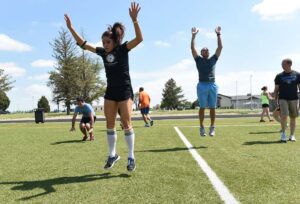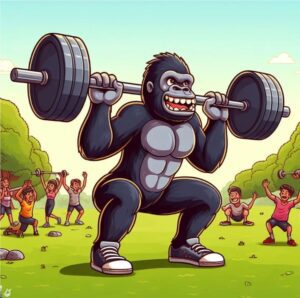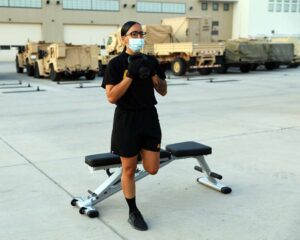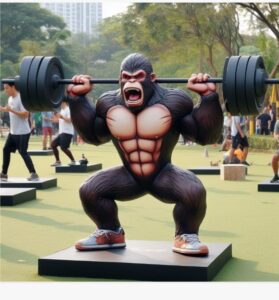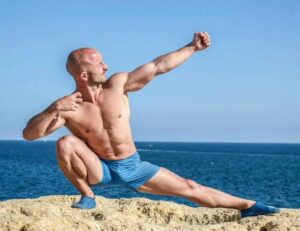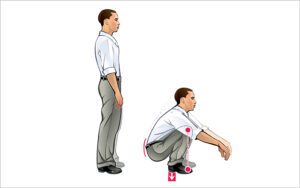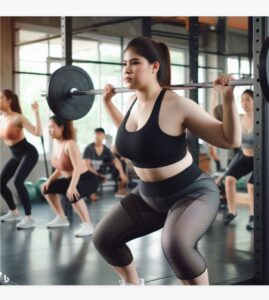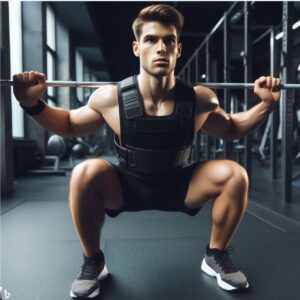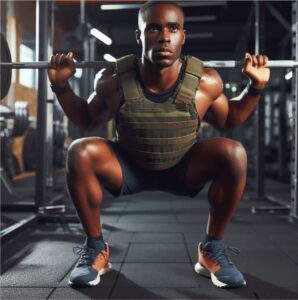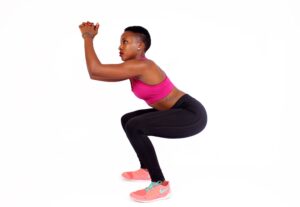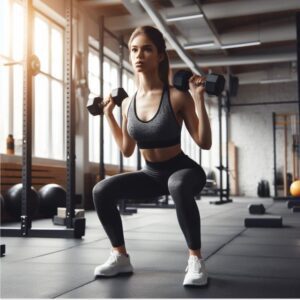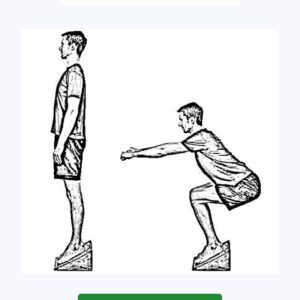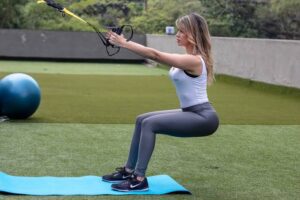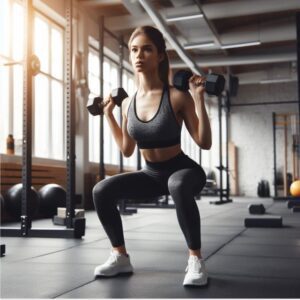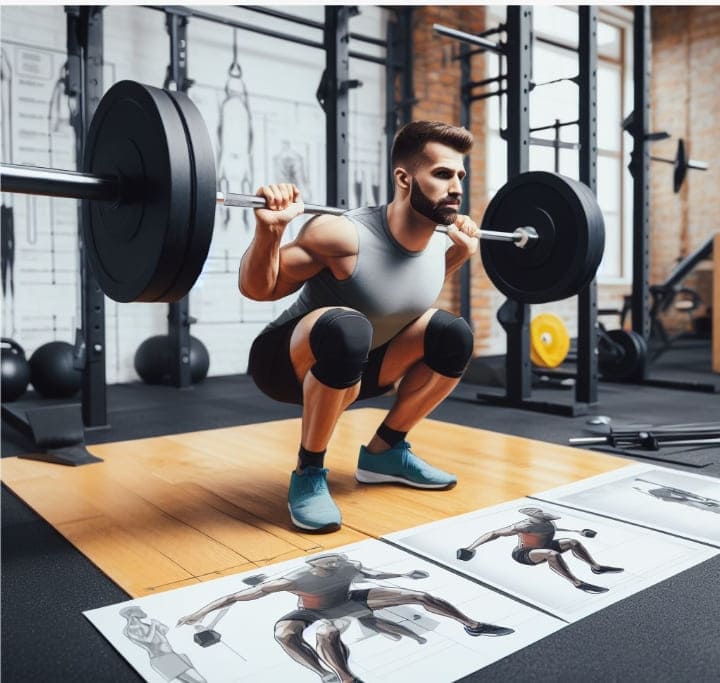
Back squats are a fundamental exercise in strength training and have been a staple in fitness programs for decades. This compound movement targets multiple muscle groups in the lower body, making it an effective exercise for building strength, power, and overall fitness. In this article, we will explore the thirteen unique benefits of incorporating back squats into your workout routine.
Before we explore the remarkable benefits of back squats for health and lower body fitness, let’s first talk about the exercise techniques and mechanism.
Understanding Back Squats
Back squats are a compound exercise that targets multiple muscle groups in the lower body, including the quadriceps, hamstrings, glutes, and calves. They also engage the core muscles for stability and balance. Back squats are a staple exercise in many strength training programs and are considered one of the most effective exercises for building muscle and strength.
How to Do Back Squats with Proper Form
Performing back squats with proper form is crucial to maximize their benefits and minimize the risk of injury. Here’s a step-by-step guide on how to do back squats with proper form:
- Bar Placement: a. Start by standing with your feet shoulder-width apart, toes slightly pointed out. b. Load the barbell onto a squat rack at a height that allows you to comfortably unrack it without excessive strain. c. Step under the barbell and place it across your upper back, resting on the traps. d. Grip the barbell with an overhand grip, hands slightly wider than shoulder-width apart.
- Initial Stance: a. As you unrack the barbell, maintain an upright posture with your back straight and core engaged. b. Keep your heels planted on the ground and your weight evenly distributed throughout your feet.
- Lowering Phase: a. Initiate the descent by bending your knees and hips simultaneously. b. As you lower, imagine sitting back into a chair, keeping your back straight and core engaged. c. Aim to lower your thighs until they are nearly parallel to the ground, maintaining proper form throughout the movement.
- Ascent Phase: a. Once you reach the desired depth, drive through your heels, pushing your body back up to the starting position. b. Maintain an upright posture, keeping your back straight and core engaged throughout the ascent.
- Repetition and Sets: a. Perform the desired number of repetitions, typically 8-12 per set. b. Rest for 30-60 seconds between sets, allowing your muscles to recover before the next set.
Tips for Proper Form:
- Keep your knees tracking over your toes throughout the movement.
- Avoid leaning forward or backward as you lower or ascend.
- Maintain a neutral spine throughout the entire squat.
- Breathe out as you lower down and inhale as you push back up.
- Use a weight that allows you to maintain proper form throughout the entire set.
- If you feel any pain or discomfort, stop the exercise and consult a qualified trainer.
Remember, proper form is essential for maximizing the benefits of back squats and minimizing the risk of injury. If you’re new to back squats or have any concerns about form, consider seeking guidance from a certified personal trainer. They can provide personalized instruction and help you tailor your workouts to your specific goals and fitness level.
Variations of Back Squats
There are many variations of back squats that can target different muscle groups and provide a challenge for different fitness levels. Here are a few examples:
- Front squats: Front squats place the barbell across the front of your shoulders, resting on the clavicles (collarbones). This variation emphasizes the quadriceps more than back squats.
- Overhead squats: Overhead squats require you to hold the barbell overhead with your arms extended. This variation targets the shoulders, triceps, and core in addition to the lower body muscles.
- Sumo squats: Sumo squats have a wider stance than regular back squats, with your toes pointed out more. This variation places more emphasis on the adductor muscles (inner thighs) and glutes.
- Box squats: Box squats are performed by lowering your body until your buttocks touch a box or platform. This variation can be helpful for beginners or those with limited flexibility.
Back squats are a versatile exercise that can be tailored to different fitness levels and goals. By following proper form, incorporating variations, and gradually increasing the intensity over time, you can effectively reap the many benefits of back squats.
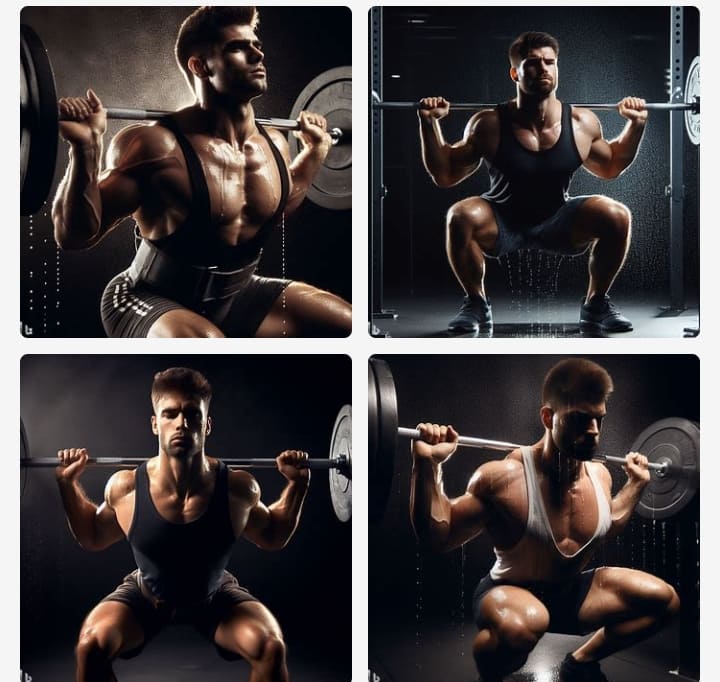
Benefits of Back Squats
While they may seem challenging, incorporating back squats into your workout routine can offer numerous benefits for both beginners and advanced lifters. Here are the 13 remarkable benefits of back squats:
1. Increased Leg Strength
One of the primary benefits of back squats is the development of leg strength. This exercise primarily targets the quadriceps, hamstrings, and glutes, helping to build muscle and increase strength in the lower body. As you progressively increase the weight you lift, your leg muscles adapt and grow stronger.
2. Enhanced Muscle Hypertrophy
Back squats are a compound exercise that engages multiple muscle groups simultaneously. This promotes muscle hypertrophy, or muscle growth, not only in the legs but also in the core, lower back, and upper body. As a result, back squats can help you build a well-rounded and proportionate physique.
3. Improved Power and Explosiveness
Back squats are a dynamic movement that requires generating force and power from the lower body. By incorporating explosive movements, such as jump squats or plyometric variations, you can enhance your power output and explosiveness. This can be beneficial for athletes participating in sports that require quick and explosive movements, such as sprinting or jumping.
4. Enhanced Functional Strength
Back squats mimic movements that occur in daily life, such as sitting down and standing up. By strengthening the muscles involved in these movements, back squats can improve your functional strength and make everyday activities easier and more efficient.
5. Increased Bone Density
Weight-bearing exercises like back squats can help increase bone density, reducing the risk of osteoporosis and osteopenia. The stress placed on the bones during back squats stimulates bone growth and improves overall bone health.
6. Improved Joint Health and Stability
Back squats require stability and control throughout the movement, engaging the muscles around the knees, hips, and ankles. This helps to strengthen and stabilize these joints, reducing the risk of injury and improving overall joint health.
7. Core Strength and Stability
Back squats require a strong and stable core to maintain proper form and balance. The muscles of the core, including the abdominals, obliques, and lower back, are activated during back squats, leading to improved core strength and stability.
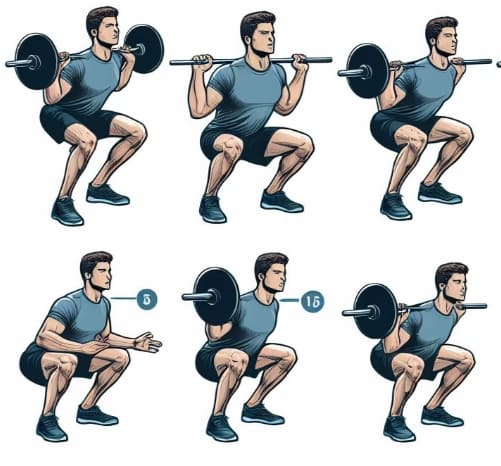
8. Increased Flexibility and Mobility
Performing back squats through a full range of motion can help improve flexibility and mobility in the hips, knees, and ankles. Over time, this can enhance your overall range of motion and make movements in daily life and other exercises easier.
9. Boosted Metabolism and Fat Burning
Back squats are a compound exercise that engages multiple large muscle groups. This leads to an increase in heart rate and metabolic rate, helping to burn calories and promote fat loss. Incorporating back squats into your workout routine can contribute to an overall increase in calorie expenditure and assist in weight management.
10. Increased Hormonal Response
Compound exercises like back squats elicit a significant hormonal response in the body. This includes the release of growth hormone and testosterone, which play a crucial role in muscle growth, recovery, and overall body composition.
11. Improved Posture
Back squats require proper alignment and posture to perform correctly. Regularly incorporating this exercise into your routine can help improve posture by strengthening the muscles of the upper back, shoulders, and core, which are essential for maintaining an upright position.
12. Mental Toughness and Discipline
Back squats can be physically demanding, requiring mental focus, discipline, and perseverance to complete each rep. Consistently challenging yourself with this exercise can help develop mental toughness and improve your ability to overcome obstacles both inside and outside the gym.
13. Versatility and Adaptability
Back squats can be performed with various equipment, such as a barbell, dumbbells, or kettlebells. They can also be modified to suit different fitness levels and goals. Whether you are a beginner or advanced lifter, back squats can be adjusted to meet your specific needs and preferences.
Back squats offer numerous benefits for individuals of all fitness levels. From increased leg strength and muscle hypertrophy to improved power, functional strength, and joint health, this compound exercise is a valuable addition to any workout routine. Additionally, back squats can contribute to increased bone density, fat burning, and overall metabolic health.

Back Squats Workout Routine For Maximum Benefits
here is a sample back squats workout routine for maximum benefits:
Warm-up (10 minutes):
- Light cardio: 5 minutes of jogging, jumping jacks, or cycling
- Dynamic stretches: Leg swings, high knees, butt kicks, arm circles
Workout (30-40 minutes):
- Back squats: 3 sets of 10-12 repetitionsa. Stand with your feet shoulder-width apart and toes slightly pointed out. b. Place the barbell across the back of your shoulders, resting on the traps (upper back muscles). c. Keep your back straight, core engaged, and toes slightly pointed out. d. Lower your body as if you’re sitting into a chair, aiming for your thighs to be nearly parallel to the ground. e. Push through your heels to return to the starting position.
- Front squats: 3 sets of 8-10 repetitionsa. Stand with your feet shoulder-width apart and toes slightly pointed out. b. Hold the barbell across the front of your shoulders, resting on the clavicles (collarbones). c. Keep your back straight, core engaged, and toes slightly pointed out. d. Lower your body as if you’re sitting into a chair, aiming for your thighs to be nearly parallel to the ground. e. Push through your heels to return to the starting position.
- Overhead squats: 3 sets of 6-8 repetitionsa. Stand with your feet shoulder-width apart and toes slightly pointed out. b. Hold the barbell overhead with your arms extended, palms facing forward. c. Keep your back straight, core engaged, and toes slightly pointed out. d. Lower your body as if you’re sitting into a chair, aiming for your thighs to be nearly parallel to the ground. e. Push through your heels to return to the starting position.
- Sumo squats: 3 sets of 6-8 repetitionsa. Stand with your feet wider than shoulder-width apart and toes pointed out. b. Hold the barbell across the back of your shoulders, resting on the traps (upper back muscles). c. Keep your back straight, core engaged, and toes pointed out. d. Lower your body as if you’re sitting into a chair, aiming for your thighs to be nearly parallel to the ground. e. Push through your heels to return to the starting position.
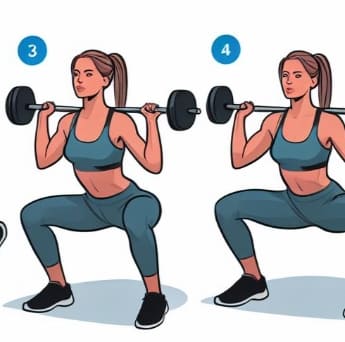
Cool-down (10 minutes):
- Static stretches: Hold each stretch for 30 seconds
- Hamstring stretch: Sit on the floor with your legs extended in front of you. Reach towards your toes, keeping your back straight.
- Quadriceps stretch: Lie on your side with one leg bent and your foot flat on the floor. Grab your foot and pull it towards your buttocks.
- Calf stretch: Stand facing a wall and place one foot behind you, keeping your heel on the ground. Lean forward, keeping your back straight and heel on the ground, until you feel a stretch in your calf.
Rest:
- Allow at least 48 hours of rest between back squats workouts to allow your muscles to recover and grow.
Back Squats Risks
Back squats are generally a safe exercise when performed with proper form and technique. However, there are some potential risks associated with back squats, such as:
- Lower back injury: Improper form or lifting too much weight can strain the lower back muscles and ligaments.
- Knee injury: Improper form or landing on one foot instead of two can put excessive stress on the knees.
- Ankle injury: Landing with the weight on the toes or rolling the ankles can cause sprains or strains.
Happy Squatting!
Related Posts
Reference:
[1] https://www.healthline.com/health/exercise-fitness/squats-benefits
[2] https://barbend.com/benefits-of-squats/
[3] https://www.issaonline.com/blog/post/back-squat-proper-form-benefits-and-common-mistakes
[4] https://www.boxrox.com/back-squat-benefits/
[5] https://christianbosse.com/why-back-squat/
[6] https://www.boxrox.com/benefits-of-the-barbell-back-squat/
[7]https://www.semanticscholar.org/paper/dbdc3d8388ca8ecbd390663d15bb179c337ef3e5
[8] https://pubmed.ncbi.nlm.nih.gov/27096286/
[9]https://www.semanticscholar.org/paper/c610e05ed4e9f7e33813ec5dab33f7133455bfb3
[10]https://www.semanticscholar.org/paper/4991d97aff328f8decb20a497e75fe82f22fc0c7
[11]https://www.semanticscholar.org/paper/e4317e6b9a77f4b84c97da9dd81b6a72a379d537
[12]https://www.semanticscholar.org/paper/c8d1b623031bab8af97b021eff2d8e242546cbd8
